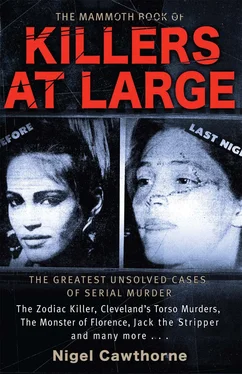By now 51 suspects were in jail, but still the killing did not stop. Ten days after Garcia and Gonzalez and Garcia were arrested, the body of another young woman, stripped and beaten to death, was found in Ciudad Juarez. Maquilladoras protesters were reportedly harassed by police and the Inter-American Commission for Human Rights moved in to investigate. The new Mexican President Vicente Fox sent in “federal crime specialists”. Resentful, local prosecutors told the Dallas Morning News that “27 of the 76 cases” were resolved, while “the other killings involving women have been isolated incidents”.
On 9 March 2002, member of the Texas state legislature joined a protest march through El Paso. Then a federal deputy attorney general in Mexico City claimed that the killings were committed by “juniors”—the son of prosperous Mexican families whose wealth and influence had protected them from arrest. He was quickly found another job. Later that year the FBI returned to lend a hand but have failed to further the investigation.
Juarez’s leaders are particularly conscious of the effect the killings are having on the image of the city. When a large wooden cross was erected as a memorial to the murdered women, the mayor received a letter from the chamber of commerce, complaining that this would damage tourism.
The day that letter was received—23 September 2002—the bodies of two more women were found in Ciudad Juarez. One victim was strangled and partially undressed; the other, the police said, had died of a drug overdose. Special investigator David Rodriguez was “sceptical” of that claim. Another young woman was found beaten to death two weeks later. Then Martha Sahagun de Fox, Mexico’s new first lady, addressed more than a thousand women dressed in black who marched through Mexico City in protest at the deaths.
In January 2003, residents of Lomas de Poleo reported finding three corpses, but the Attorney General Jesus Solis and the police refused to confirm or deny whether they were connected to maquilladoras murders. These were not the first corpses found in this desert area near a rundown suburb. Two others had been found nearby in October 2002. One of them identified as 16-year-old Gloria Rivas.
On V-Day, 14 February 2004, in Ciudad Juarez, busloads of female students from around the world calling themselves “vagina warriors” marched into town for special performances of The Vagina Monologues , performed by such film stars as Jane Fonda and Sally Field, to highlight and denounce what was now being dubbed “femicide”. It did no good.
On 17 February 2003, two teenagers searching the wasteland for cans and bottles found three more bodies. When the police turned in Mimbre Street at 2 p.m., they found the remains of three women dumped there. While the bodies were being removed, an onlooker found a fourth.
At a press conference two days later the police said that they had identified three of the victims—16-year-old Esmeralda Juarez Alarcon who had vanished on 8 January 2003, 17-year-old Juana Sandoval Reyna who had been missing since 23 September 2002 and 18-year-old Violeta Alvíedrez Barrios who had disappeared 4 February 2003. All three had last been seen alive in downtown Juarez. When asked about the fourth victim, the police refused to acknowledge that there was another body and called a halt to the press conference. With no end to the killings in sight, the authorities are in a state of denial.
There is no shortage of suspects. Along with those already in jail, a number are still at large. There is Armando Martinez, alias Alejandro Maynez, who was arrested in 1992 for the murder of a woman in Chihuahua City, some 220 miles to the south of Juarez. He was released “by mistake” and then conveniently vanished along with his police file. Ana Benavides, who was accused of killing and dismembering a couple and their child in Juarez in 1998, claimed that Martinez committed the triple-murder and framed her.
Then there is Pedro Padilla Flores. Convicted in 1986 for the rape and murder of two women and a 13-year-old girl, he confessed to other killings but was not charged. Padilla escaped in 1991 and is still at large.
The police themselves remain under suspicion. At least ten women have accused Juarez police officers of sexual assault and kidnapping over the past five years. No charges have been brought. But an unnamed policeman is sought in connection with the murder of 27-year-old Laura Inere and 29-year-old Elizabeth Gomez in 1995.
In April 1999, Julio Rodriquez Valenzuela, the former police chief of El Sauzal, Chihuahua, was accused of attempting to rape a 16-year-old girl near where two previous murders had been committed. Chihuahua authorities report that he fled to “El Paso or New Mexico”. He remains a fugitive.
Also on the run are ex-Mexican federal agents Jorge Garcia Paz and Carlos Cardenas Cruz. They are sought for questioning in the disappearance of 29-year-old Silvia Arce in 1998 and the death of 24-year-old Griselda Mares, who was allegedly killed in error by police in a dispute over stolen guns.
Former Chihuahua state policeman Sergio Hernandez Pereda fled in 1998 shortly after the murder of his wife. He is still at large.
Former Ciudad Juarez policeman Dagoberto Ramirez was fired in 1999 after he was accused of murdering his lover. He claimed that she had committed suicide and was released, but the police officials did not reinstate him.
Melchor Baca, a former federal policeman, has been on the run for eight years. He disappeared after killing a male friend of his wife at the courthouse where they both worked. And then there is Pedro Valles, the cop who was assigned to investigate the Ciudad Juarez murders and killed his girlfriend at the state police academy in 1998. He is still at large.
Then there are the conspiracy theories. Some maintain that the murders are the work of organ harvesters who are collecting spare parts for transplants. Others believe that they are the work of a satanic cult like that run at Matamoros by Adolfo de Jesus Constanzo who died in a shoot-out in 1989. Some of his cannibalistic followers are still thought to be at large.
As drug gangs are at work in the area, it had been mooted that the missing women were addicts or small-time mules, who were executed because they knew too much. In November 2004, the FBI report accused unnamed narcotics traffickers for the torture and death of 17-year-old Lilia Garcia in the February 2001. Her body was found 100 yards from the spot where eight other victims were discovered. Then there are the juniors, or perhaps a cabal of rich and powerful sadists whose wealth puts them above the law.
Meanwhile Abdul Sharif won a judicial review in the Elizabeth Garcia case. The murder conviction was upheld, but his 30-year sentence was reduced to 20. However, the prosecutors say that Sharif may be charged with other murders. But as he has already been in jail for over 11 years, fresh charges are hardly going to stop the killings.
In 2004, a federal special prosecutor was appointed. Her remit extends to investigating the incompetence of the local police. But so far she has drawn a blank. However, a $2.7 million fund to aid the families of the victims has been established. Amnesty International has criticized the Mexican government’s efforts to investigate these crimes and the United Nations has condemned Mexico’s record on violence against women. But nothing helped. There were more than 28 related murders in 2005.
On 15 August 2006 Edgar Alvarez Cruz was arrested by US Marshals in Denver, Colorado and charged with 14 of the murders. Jos Francisco Granados and Alejandro Delgado Valles, aka El Calá , have also been arrested in connection with these 14 murders. Two of the men are said to be drug addicts and the third a psychopath. Even if these men are found guilty as charged, it seems that there are plenty more serial killers at large in and around Ciudad Juarez.
Читать дальше











